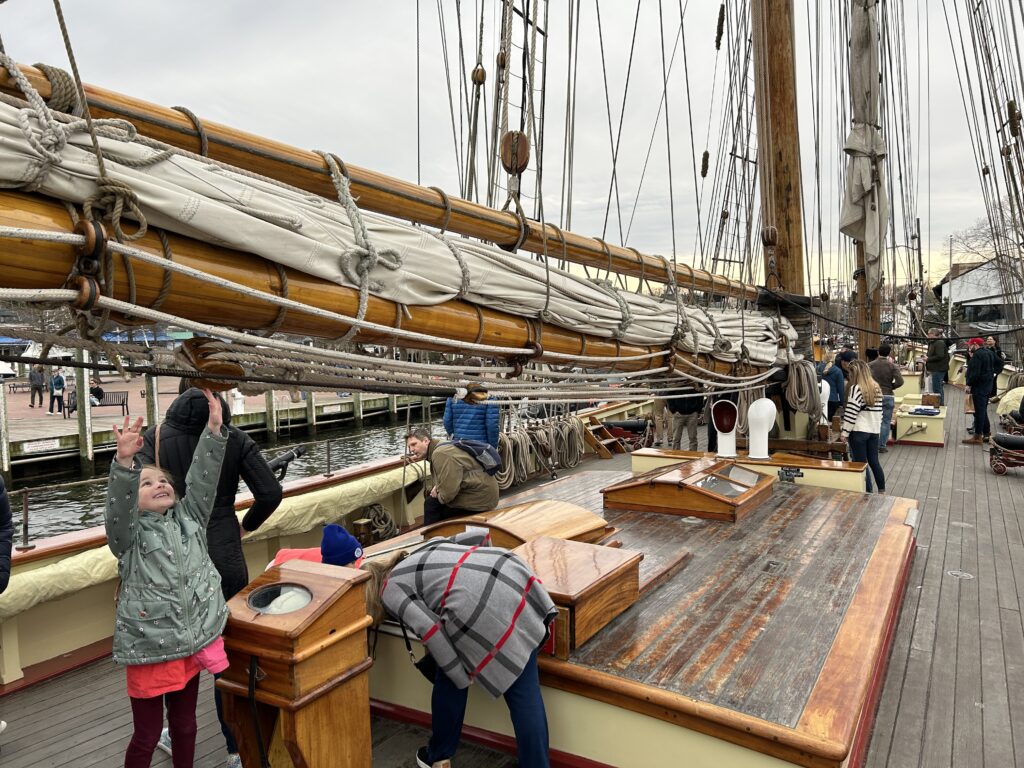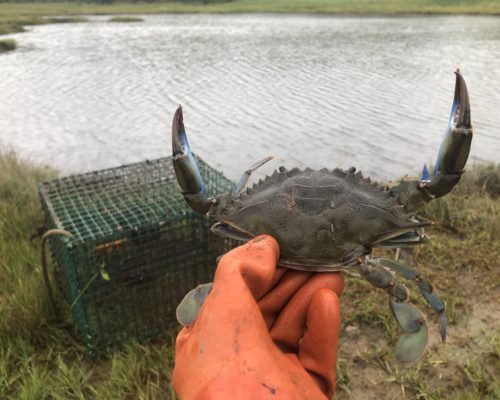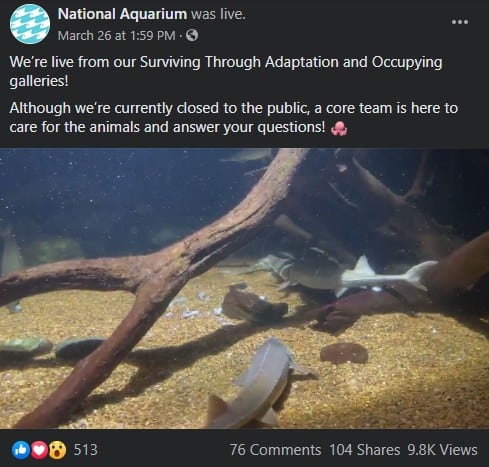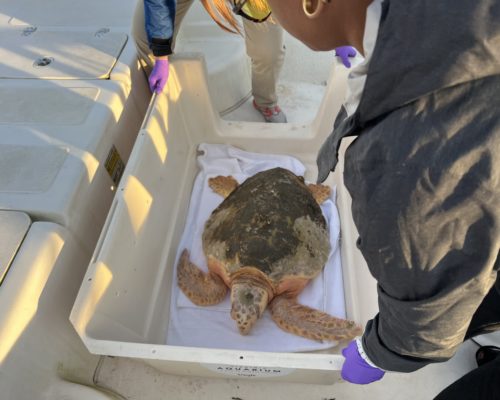Like most of us, Annapolis Harbormaster Beth Bellis and Pride of Baltimore II Senior Captain Jan C. Miles first learned of the collapse of the Francis Scott Key Bridge early on the morning of March 26.
Miles and Pride were not at home in Baltimore. The floating ambassador for Baltimore and crew were away at City Dock in Annapolis , where they had been since March 21st for the state’s Maryland Day celebrations. They had been scheduled to return to their home dock, on South Clinton Street near the Port of Baltimore, on March 26th.
When it quickly became clear that the bridge collapse would keep the vessel from its home port for the foreseeable future, Miles asked Bellis if Pride could remain in Annapolis temporarily. There, the ship could still connect with history-loving visitors.
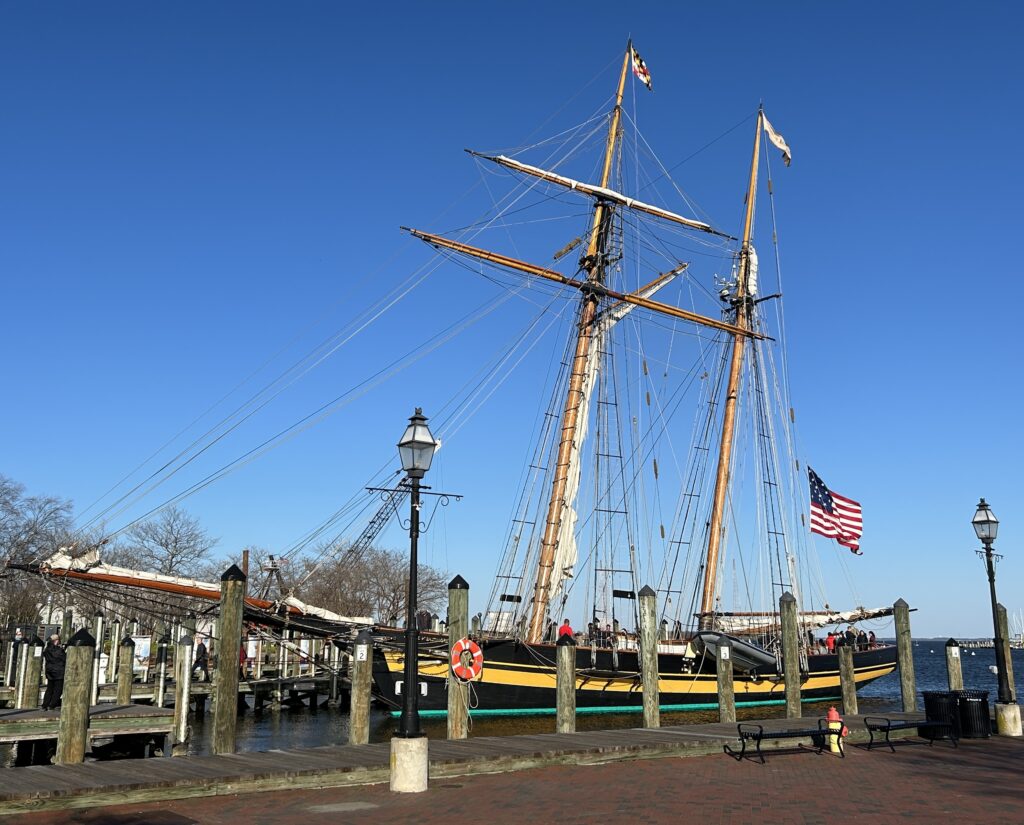
“Any of us who are professionally involved in transportation realize that wholly unexpected things can, and will, happen,” Miles told Chesapeake Bay Magazine. “So although we are all saying ‘Oh, wow, this is going to be quite the story,’ it was all about making a sober recognition of this surprise event and fathoming what could be fathomed at the moment.”
The Harbormaster’s team and Annapolis officials were happy to give them an additional week of free docking, and have since extended to two weeks. Pride‘s crew, making the best of a bad situation, opened the historic vessel for free deck tours to the public for March 29 through April 1. From Friday to Monday, the ship hosted an incredible 5,000-plus visitors. They’re working on making Annapolis deck tours available again this weekend.
In some ways, the story that Pride tells ties in with the shipping crisis underway in Baltimore right now. The swift privateer ships that Pride is modeled after worked to end Britain’s ongoing interruption of American trade on the Atlantic Ocean.
“Pride is a storytelling boat,” said Miles. “She is a visual representation of how Maryland and Baltimore were key players in the coming-of-age story of the whole United States, because the war that she harks back to (the War of 1812) is when we first began to identify as ‘Americans.’ By representing the historical significance of Baltimore as a shipbuilding city and of Maryland as a pivotal state, she has in no small way put them on the global map.”
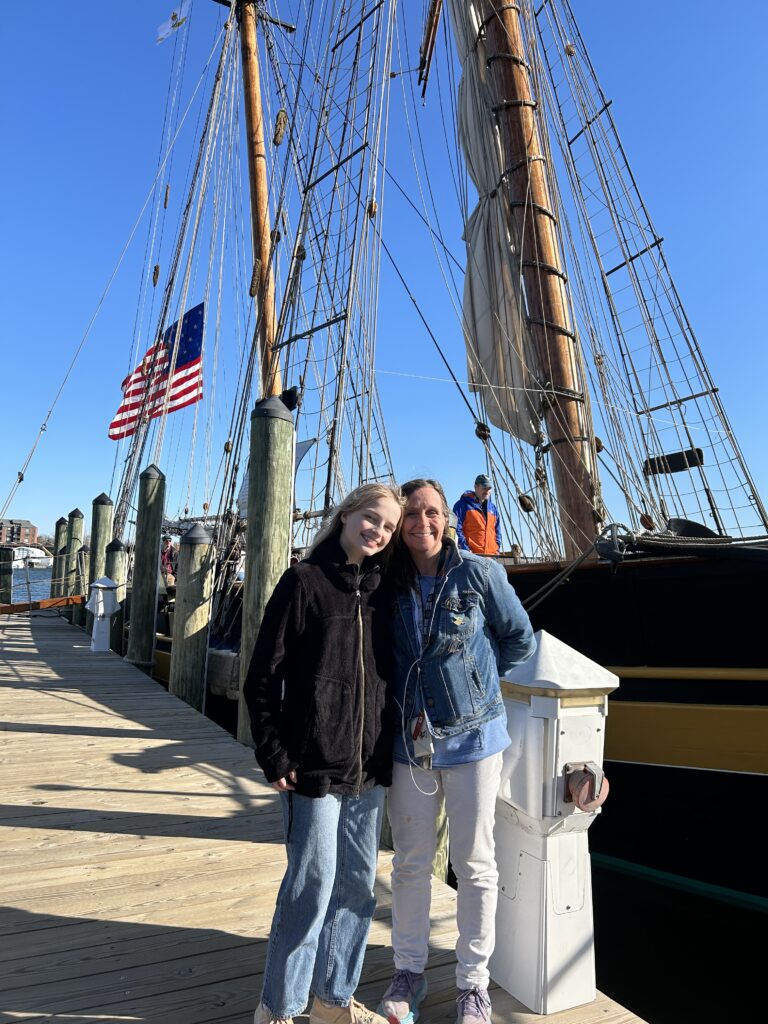
Having the unexpected opportunity to see history aboard Pride of Baltimore II and meet the crew who sails her so was certainly a happy surprise for middle-schooler Aurora Denison. Denison, of Montgomery County, calls herself an “absolute history lover”. Denison was thrilled to spot the ship, which she’d never seen in person, from the top of Main Street in Annapolis after taking a tour of the State House with her family on March 29.
“The war that America’s been involved in that interests me the most is definitely the War of 1812,” Denison says. “I was able to recognize that this was an 1812-era boat pretty easily, so I had to come and check it out. Though the reason why it’s here is sad, it’s absolutely wonderful to be able to see it.”
As for what’s ahead for Pride, Miles shared that while he’s graciously received invitations from Chestertown, Solomons, and Cambridge to dock, the vessel plans to stay in the Annapolis harbor until at least April 8th.
At that point, Miles says, there will be a review of the situation in collaboration with the Harbor Master’s Office. Pride will post additional deck tour hours to Facebook and their website once they’re scheduled.
While the Key Bridge Response Unified Command just opened two temporary channels for critical commercial marine traffic, the first channel is not deep enough for Pride II. And decisions on which vessels may pass through are up to the Captain of the Port. Miles is hopeful, saying on Tuesday, “Every day progress towards more than one limited opening option is underway.”
Pride’s long-term operations rely on what roughly 15,000 jobs and 15 million dollars in daily commerce rely on: the quickly-changing reopening plan for a channel and a port that have, just like the privateers of 1812, continued to put Baltimore and Maryland on the global map.

